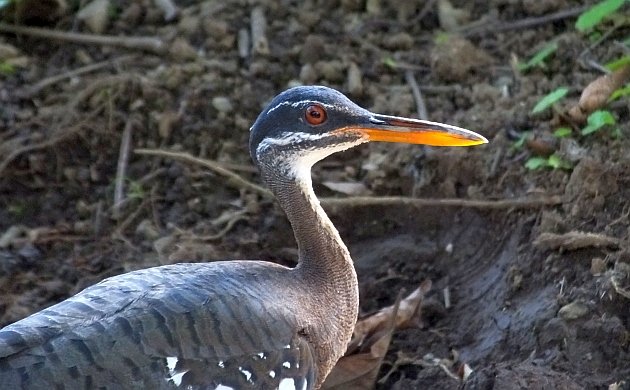
Some birds seem familiar but that’s just because they are the ones we grew up with, the birds that were hopping or flying around the neighborhood. The familiar ones, the usual birds, of course depend on where someone spent their childhood. Those of us who raced bikes with banana seats through the streets of Niagara Falls, Cleveland, or Jackson shared space with Northern Cardinals and American Robins. For kids in the Yucatan, Turquoise-browed Motmots and parrots are part of the regular avian scene. In the Amazon, many more species are accepted as normal, everyday birds including potoos with haunting calls, flocks of screeching parakeets, and dozens of other fantastic birds too loud in voice or plumage to be ignored.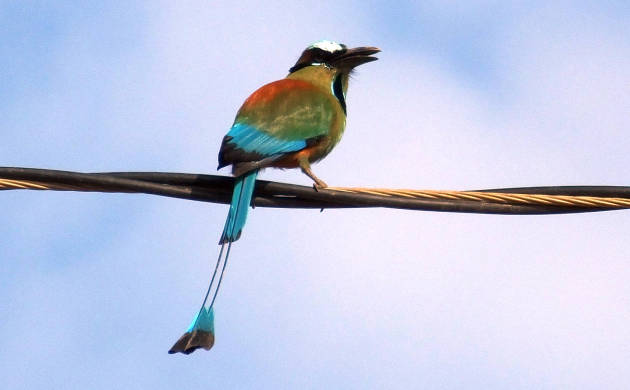
Turquoise-browed Motmot- yes, this shocking bird is normal in various places!
Some lucky kids who live near forested rivers, streams, or other wetlands from southern Mexico all the way to the Brazilian Pantanal might be familiar with one of the more unique members of the avian kind. Some surely live near and espy the Sunbittern and because they see it so often, perhaps take this modern day relic of the Oligocene for granted, view it as just another bird that lives in their natural sphere. Given the ample distribution of this species in Costa Rica, I am sure that we have more than a few folks out there who know the Sunbittern well even if they don’t watch birds at all. It’s just too odd to ignore and rightly so because there’s just nothing else like it. On account of its fantastic appearance, the Sunbittern is one species that every birder would love to see, check out these hints to make your acquaintance with it in Costa Rica:
Know what to look for
Is it a bittern? Nope, nothing like a bittern. Is it a rail? Well, it might sort of look like a rail but it still isn’t one of those. This bird won’t really look like anything you have ever seen because it’s in a family all on its own. The most recent studies indicate that the Sunbittern is most closely related to another cool avian oddball, the Kagu, but they still went their separate ways 30 or so million years ago. This is why it looks so unique and why a birder should be watching for a species around the size of a White Ibis or small heron but with an odd, almost turkey-like body shape. Oh, and then there is the head and neck that are sort of like a bustard/rail thing.
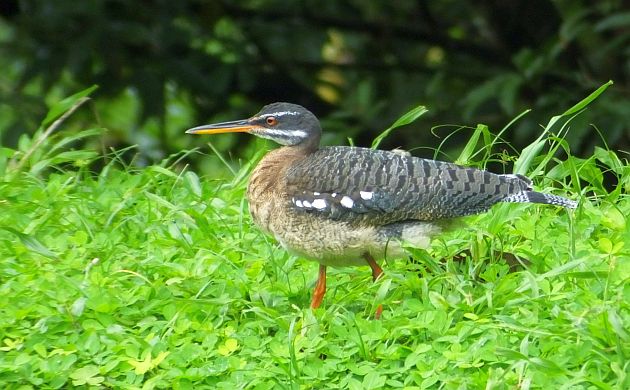
Know where to look
Sunbitterns aren’t rare but we still don’t see them that often. This is because they are shy, stealthy birds that blend in with their habitat and have been doing so for millions of years. I can’t say for sure but suspect that their ability to survive for multiple eras is partly why they occur incognito on some streams in the heavily populated Central Valley of Costa Rica. In general, though, the Sunbitterns of Costa Rica live on forested rivers and streams where there are fewer people, the cleaner the better and mostly on bodies of water that rush over rocky substrates. However it is worth noting that we don’t often see them in some spots just downstream from hydroelectric projects.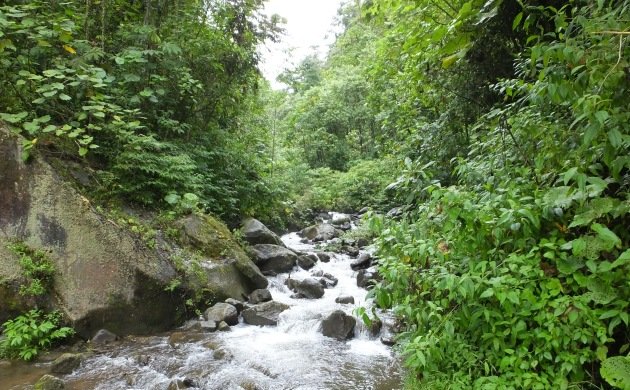
Check any rushing river or stream with forested banks and you might see one. A few of the better known spots include rivers near Rancho Naturalista, the Sarapiqui River, the Pacuare River, and forested waterways in the Arenal/Fortuna area.
Know how to look for it
For some birds, just being in the right habitat results in a sighting. This is not necessarily the case for the Sunbittern because it naturally hides in plain view, loves to watch from the shadows, and is just as likely to be around the next bend or far downstream from your only vantage point on a river. With that in mind, the easiest way to see one in Costa Rica is probably by going on a river rafting trip on the Pacuare or Sarapiqui because you can cover much more ground. However, since optics don’t mix well with splashing waves and water, the best way to enjoy a Sunbittern through binoculars is by, (1) sneaking up near a forested waterway with a rocky substrate, (2) carefully scanning the edges and middle of the stream, (3) watching for the white spots in the wings, and (4) continue following the stream and watching as many parts of it as you can. Those white spots are important because they seem to stand out more than the rest of the bird even at a distance.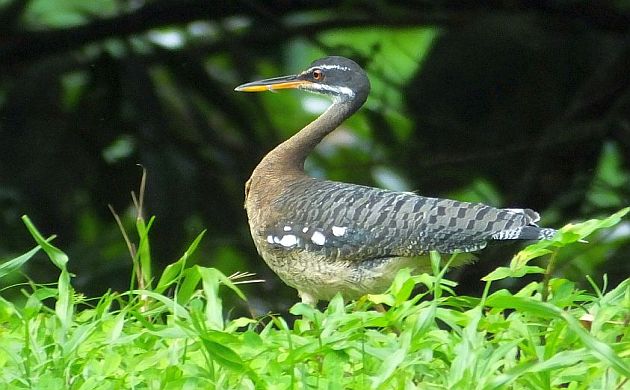
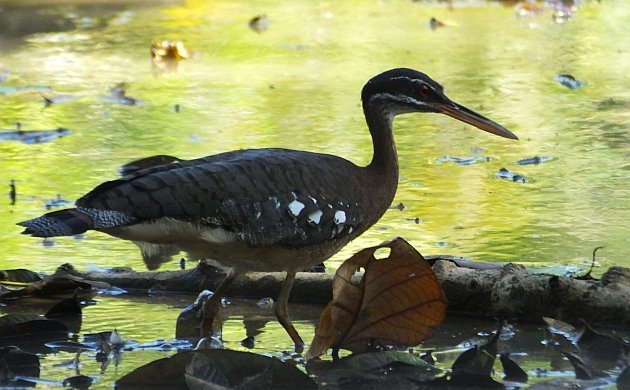
I should also mention that March might be the best time to hear Sunbitterns in Costa Rica. They seem to call more at this time of the year to establish territories for nesting. Over the past week, I have heard and seen them at a few different spots, even at a place where I had never seen it before. But that’s just how the Sunbittern rolls, probably somewhere on that rushing river even if it’s just around the bend, hidden behind a fallen log, or showing its wings a kilometer downstream.











Leave a Comment